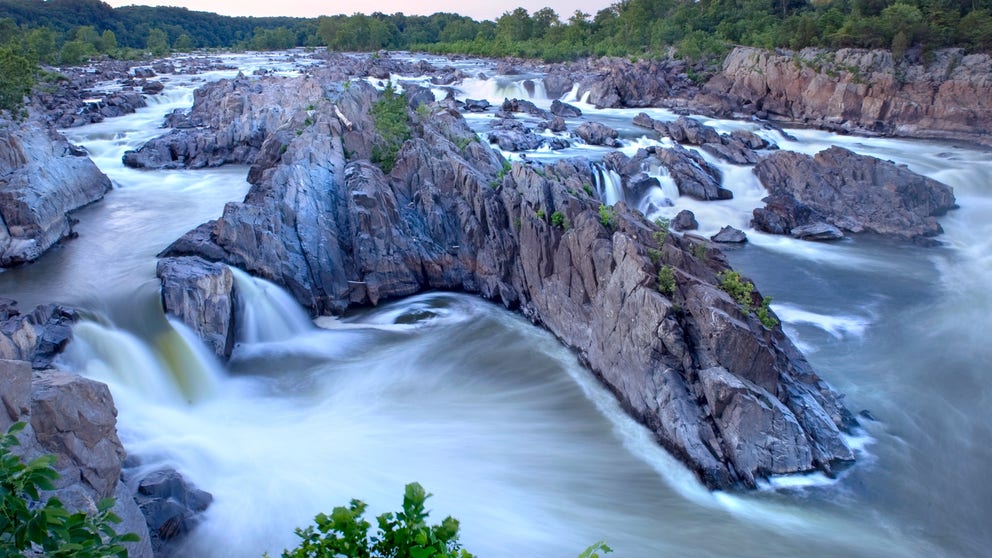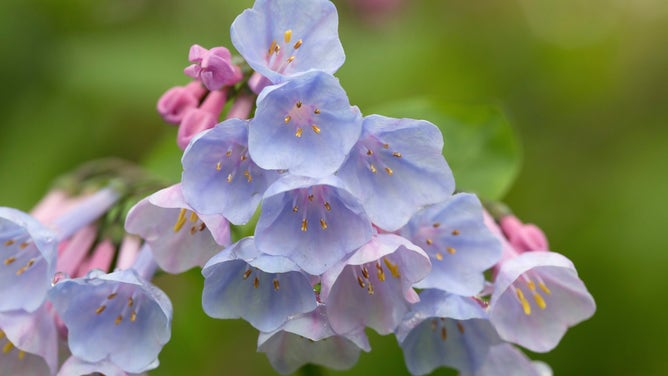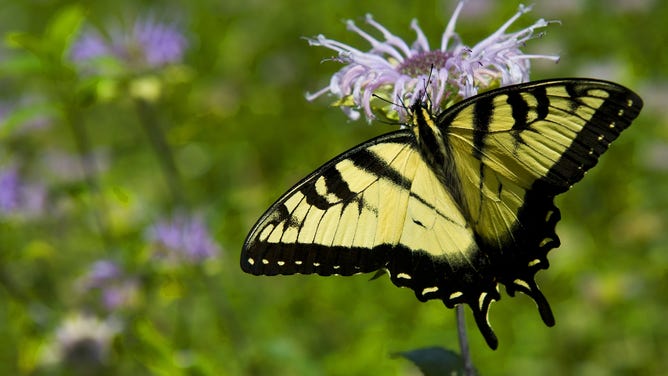The Potomac Gorge: an oasis of biodiversity near Washington, D.C.
Home to Great Falls Park, the Potomac Gorge has thousands of plant and animal species.
8 things to know about Great Falls and the Potomac Gorge
Thanks to its unique geology, geography, and hydrology, the Potomac Gorge is one of the most biodiverse and significant natural areas in the National Park System.
Cradling the sunset face of Washington, D.C. is the Potomac Gorge.
An ancient landscape carved out over thousands of years, the Potomac Gorge cradles a river by the same name and one that supplies millions in the region with freshwater.
As the Potomac River gives life to the people of D.C. and nearby Maryland and Virginia, it also sustains the gorge it calls "home."
Fed by spring rains, melting snow and other weather events, the river turns the Potomac Gorge into a quiet oasis of biodiversity near the bustling nation’s capital.
Forged by water and weather
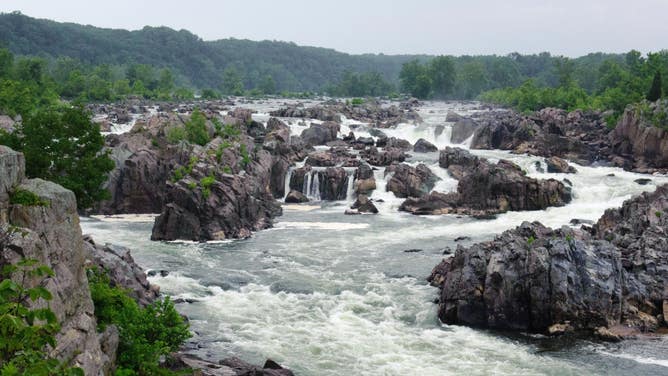
At the northern end of the Potomac Gorge, water crashes over the rapids at Great Falls Park.
(Maddie Meyer / The Washington Post / Getty Images)
"The Potomac Gorge is a very unique part of the Potomac River," said Susan Finta, a park ranger for the George Washington Memorial Parkway stationed at Great Falls Park in Virginia.
"It's just an amazing, incredible place to come to."
According to Finta, the Potomac Gorge runs along a 15-mile stretch of the Potomac River, starting at the river rapids at Great Falls Park and downstream to downtown Washington, D.C.
What makes the gorge unique is that it’s fed by waters draining from a large geographic region consisting of Maryland, Virginia, West Virginia and Pennsylvania — a landmass of over 11,000 square miles.
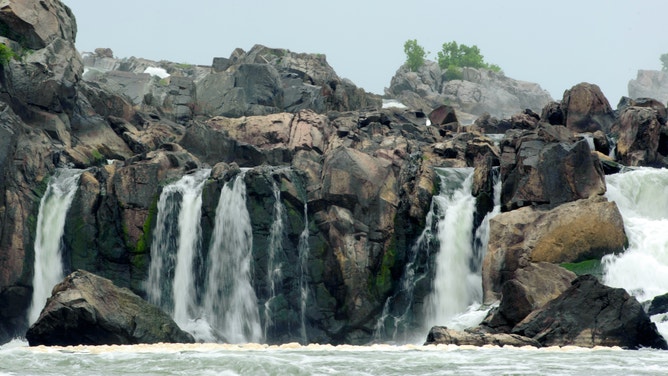
Water carves through rock as flows through the Potomac Gorge.
(Maddie Meyer / The Washington Post / Getty Images)
"We have drainage that can come over days at a time, where it could rain in West Virginia and be sunny and dry in Washington, D.C., and the river will rise and the flow will increase," Finta said.
"The spring rains that are crossing over the Great Falls, and if they're in the gorge, is scouring those rocks and scouring the lower levels of the Potomac Gorge with turbulent water coming from, in some cases, over 200 miles away from us."
According to Finta, spring also brings snowmelt into the river. This confluence of waters from waterways upstream contribute to the constant erosion and change of the Potomac Gorge.
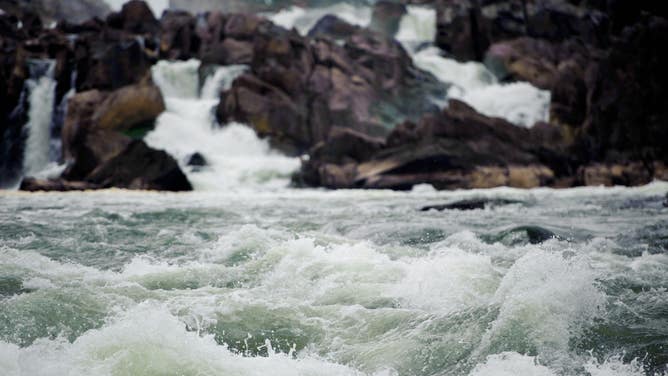
Water from hundreds of miles away drain into the Potomac Gorge.
(Maddie Meyer / The Washington Post / Getty Images)
Those changes can also be caused by weather factors downstream.
Hurricanes that move up the mid-Atlantic coast create storm surges that cause water to back up into the Potomac River. These tides cause the river to rise and carve through the gorge — a process that’s been going on for about 35,000 years.
"The changes that affect the Potomac Gorge, it has forces of nature coming up from south and down it from north," Finta said. "It's really quite remarkable."
Rich in biodiversity
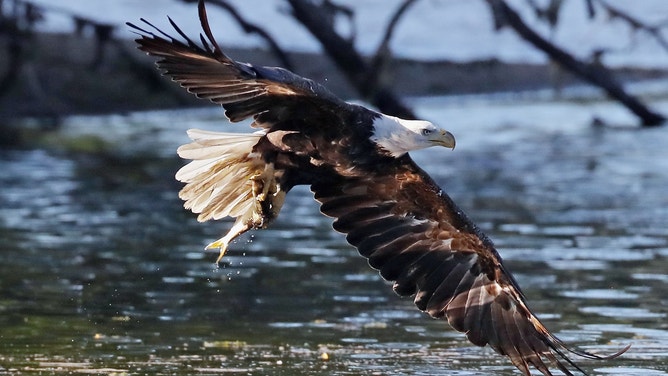
The Potomac Gorge is a nesting ground for many birds, such as bald eagles. Pictured here is an eagle that holds a fish in its claws.
(Bruce Bennett / Getty Images)
As water carves out the Potomac Gorge, it also carves out a space for rich plant and animal life — particularly in the northern end of the gorge, where the National Park Service’s Great Falls Park lies.
"Spring season is perfect right now in Great Falls Park and the tributaries to the river and through the gorge," Finta said.
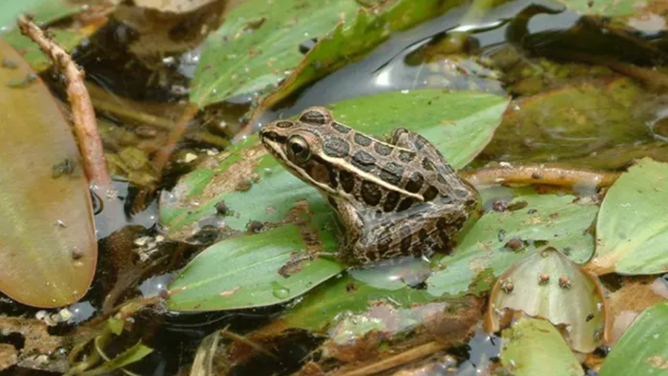
Pickerel frogs are some of the amphibians that live along the Potomac Gorge.
(National Park Service)
According to Finta, the spring rains create vernal pools that attract insects and amphibians. The rains also feed the river, which is home to many fish.
These smaller animals then attract reptiles, mammals and birds. Some of which include lizards, bald eagles and white-tailed deer.
Not to be outdone by the animal life, plants also hold court in this ecosystem.
"We have over a thousand documented plants that grow through the Potomac Gorge," Finta said. "That's an incredible diversity."
"Every creature that lives here plays a part in the system, and we're part of it as well, without a doubt."
Water is life

A deer fawn curled up in the grass by the Potomac River.
(Gerald Elkin / National Park Service)
"To be out in these natural environments gives you a sense of the power of life around you and your place in it," Finta said.
According to Finta, in addition to the wildlife, between 5 and 6 million people in the region depend on the water that flows and carves out the Potomac Gorge.
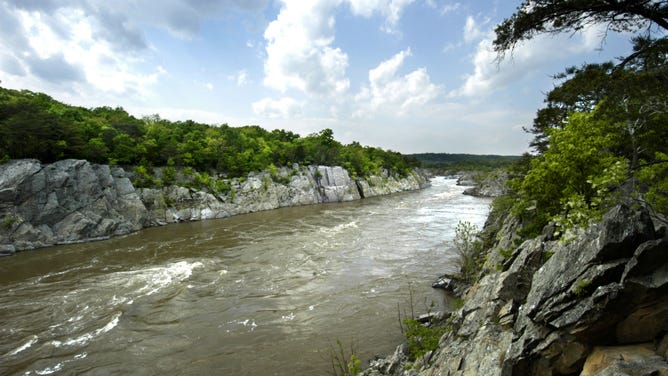
The flowing Potomac River.
(Gerald Martineau / The Washington Post / Getty Images)
The water — in the form of rain and snowmelt — traveled hundreds of miles to reach its destination and sustain locals and visitors depending on the Potomac waterway.
"Water, no matter where you live, that's the lifeblood of all of us everywhere," Finta said.
"So, to be a part of protecting these lands and these waters is vitally important to everything that we have in our own lives."
